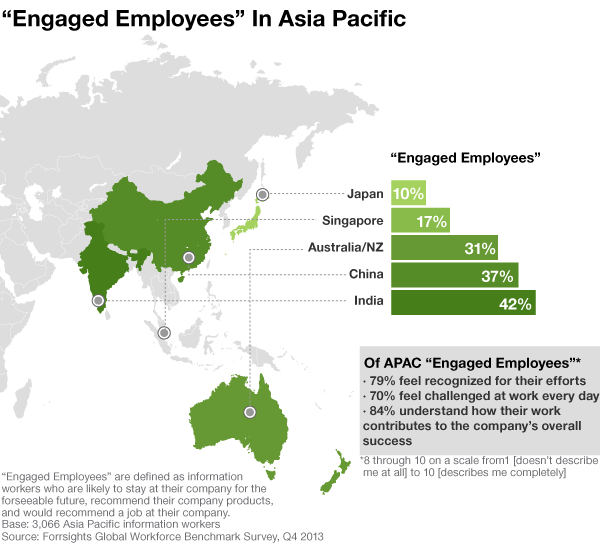The Data Digest: Emotional Connections, Engaged Employees, And Better Business Results In Asia Pacific
When Satya Nadella assumed his role as CEO of Microsoft, he shared a profound statement in a companywide email: “I truly believe that each of us must find meaning in our work. The best work happens when you know that it’s not just work, but something that will improve other people’s lives. This is the opportunity that drives each of us at this company.” Nadella’s message speaks to the importance of employee satisfaction in driving organizational success.
Research demonstrates that psychological and social fulfillment directly influences an employee’s commitment to staying with a company and contributing to the firm’s overall success. For example, a report by Deloitte shows that corporate teams that foster a sense of diversity and inclusion among employees outperform others by more than 80%.
Even in business, feelings are facts — employees’ feelings about their company are a corollary to their productivity. And when it comes to the Asia Pacific workforce, those strong emotional connections that yield employee engagement vary greatly across the region. Forrester’s Business Technographics® data shows that India has the largest share of “engaged employees,” while Japan has the smallest:

As Asia Pacific continues to emerge as an engine of economic power, a host to accelerated urbanization, and home to the second-fastest-growing online population, the potential of its labor pool becomes ever more valuable — and, with it, the “engaged employee” becomes a priority.
Therefore, my colleague Paul Hamerman says in his recent report that human resource management must include a comprehensive system of engagement that drives business value. He specifies that “strong human resource management functions [should] focus on more employee development, performance and rewards programs [because] employee engagement improvement leads to higher retention and, ultimately, better business results.”
On the occasion of International Workers' Day (also known as Labour Day or May Day), take a moment to recognize the value of your engaged employees in terms of their contribution to your operation — and, ultimately, to your bottom line.
